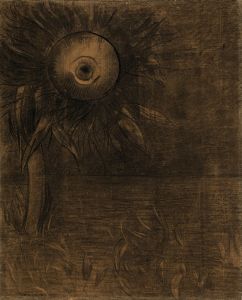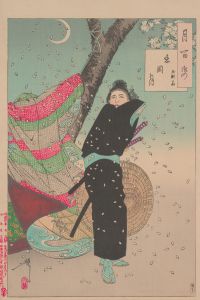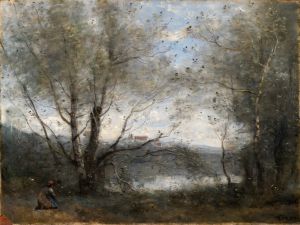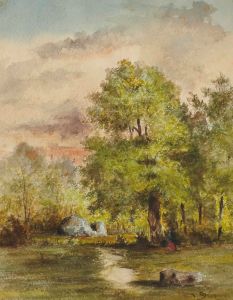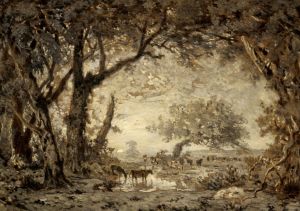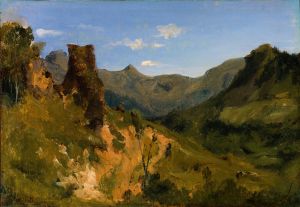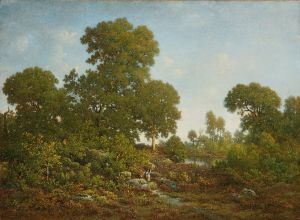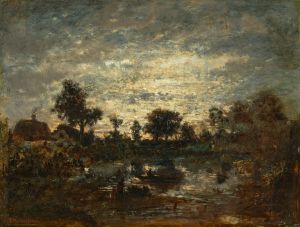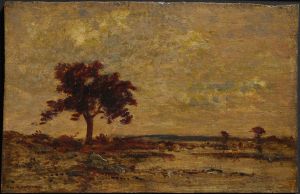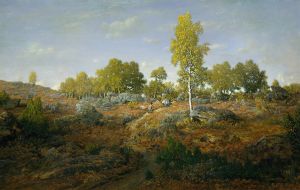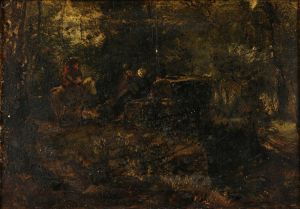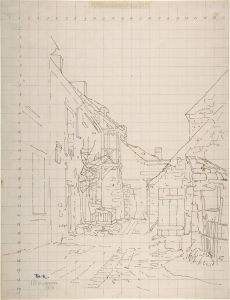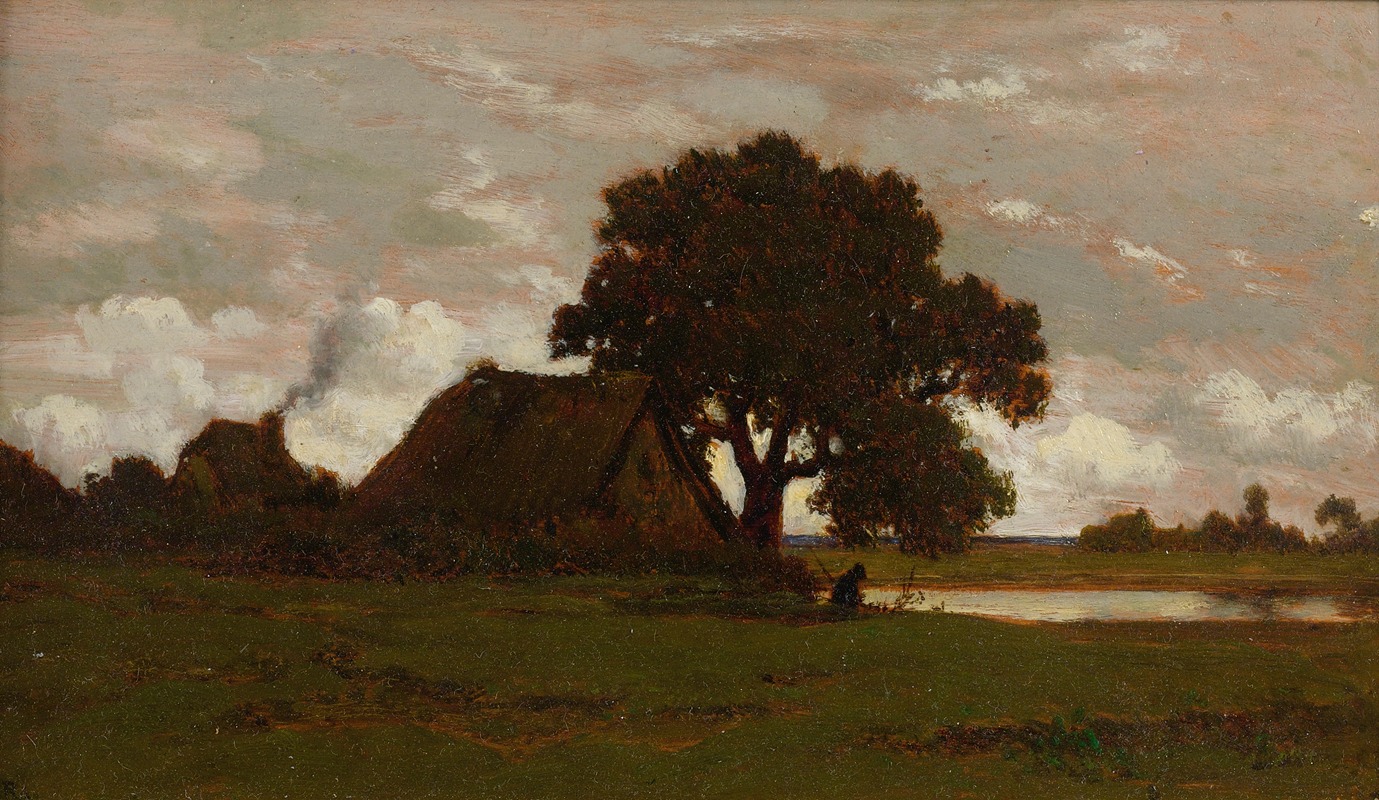
Chaumières Près De L’etang
A hand-painted replica of Théodore Rousseau’s masterpiece Chaumières Près De L’etang, meticulously crafted by professional artists to capture the true essence of the original. Each piece is created with museum-quality canvas and rare mineral pigments, carefully painted by experienced artists with delicate brushstrokes and rich, layered colors to perfectly recreate the texture of the original artwork. Unlike machine-printed reproductions, this hand-painted version brings the painting to life, infused with the artist’s emotions and skill in every stroke. Whether for personal collection or home decoration, it instantly elevates the artistic atmosphere of any space.
Chaumières Près De L’étang (Cottages Near the Pond) is a painting by Théodore Rousseau, a prominent French artist associated with the Barbizon School. This artistic movement, which emerged in the mid-19th century, was characterized by its focus on naturalistic landscapes and rural scenes, often painted en plein air (outdoors). Rousseau, one of the leading figures of this movement, is celebrated for his ability to capture the serene beauty and atmospheric qualities of the French countryside.
The painting depicts a tranquil rural scene featuring cottages situated near a pond, surrounded by lush vegetation. Rousseau’s attention to detail and his mastery of light and shadow are evident in the composition, which conveys a sense of harmony between human habitation and the natural environment. The work reflects the artist's deep appreciation for the rural landscapes of France, particularly those in the region of Fontainebleau, where he spent much of his career.
Chaumières Près De L’étang exemplifies Rousseau's commitment to portraying nature with authenticity and emotional resonance. Unlike the idealized landscapes of earlier periods, his works often emphasize the raw, unembellished beauty of the countryside. This approach was a hallmark of the Barbizon School, which sought to move away from the formalism of academic art and instead focus on the direct observation of nature.
The exact date of creation for Chaumières Près De L’étang is not definitively documented, but it is consistent with Rousseau's mature style, which developed during the 1830s and 1840s. During this period, Rousseau faced challenges in gaining recognition from the official art establishment, as his works were frequently rejected by the Paris Salon. However, his persistence eventually earned him acclaim, and he became a respected figure in the art world by the time of his death in 1867.
Today, Chaumières Près De L’étang is considered an important example of Rousseau's contribution to landscape painting and his role in the development of modern art. The painting is held in a private collection, and its details are occasionally featured in exhibitions or publications dedicated to the Barbizon School and 19th-century French art.





